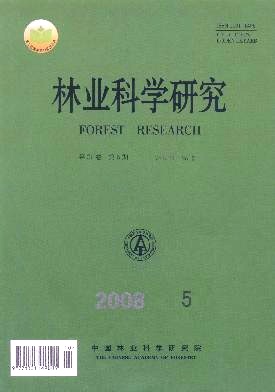|
[1]
|
何华田,葛颂. 植物种群交配系统、亲本分析以及基因流动研究[J]. 植物生态学报, 2001, 25 (2) : 144 - 154
|
|
[2]
|
张大勇. 植物生活史进化与繁殖生态学[M]. 北京:科学出版社,2004: 384
|
|
[3]
|
Krauss S L. An evaluation of AFLP fingerp rinting technique for theanalysis of paternity in natural populations of Persoonia m ollis [J].Aust J Bot, 1998, 46 (3) : 533 - 546 |
|
[4]
|
Krauss S L. Restricted gene flow within the morphologically comp lexspecies Persoonia m ollis ( Proteaceae) : contrasting evidence from themating system and pollen dispersal [J]. Heredity, 1994, 3:142 - 154 |
|
[5]
|
Fritsch P, Rieseberg L H. High outcrossing ratesmaintain male andhermaphrodite individuals in population of the flowering p lantDatiscaglom erata [J]. Nature, 1992, 359: 633 - 636 |
|
[6]
|
Dow B D, AshleyM V. Microsatellite analysis of seed dispersal andparentage of sap lings in Bur oak, Quercus m acrocarpa [J].Mol Eco, 1996, 5: 615 - 627 |
|
[7]
|
Chaix G, Gerber S, Razafimaharo, et al. Gene flow estimation withmicrosatellites in aMalagasy seed orchard of Eucalyptus grandis[J].TheorApp l Genet, 2003, 107: 705 - 712 |
|
[8]
|
陈小勇,宋永昌. 自然定居青冈幼苗的亲本分析[J]. 武汉植物学研究, 2000, 18 (3) : 174 - 180
|
|
[9]
|
张冬梅,沈熙环,何田华,等. 利用同工酶对油松无性系种子进行父本分析[J]. 植物生态学报, 2001, 25 (2) : 165 - 173
|
|
[10]
|
董贞荣,陈进明,王青锋. 泽苔草交配系统的RAPD分析[J]. 武汉植物学研究, 2006, 24 (2) : 167 - 170
|
|
[11]
|
艾 畅,徐立安,赖焕林,等. 马尾松种子园的遗传多样性与父本分析[J]. 林业科学, 2006, 42 (11) : 146 - 150
|
|
[12]
|
Schmutterer H. The neem tree Azadirachta indica A. Juss. andotherMeliacious p lants: souce of unique natural p roducts for integrated pest management, medicine, industry and other purposes[M]. VCH, Weinheim, Germany, 1999: 696 |
|
[13]
|
赖永祺. 印楝栽培[M]. 昆明:云南科技出版社, 2003: 21 - 23
|
|
[14]
|
彭兴民,张燕平,赖永祺,等. 印楝生物学特性及引种栽培[J].林业科学研究, 2003, 16 (1) : 75 - 80
|
|
[15]
|
吴疆翀,彭兴民,郑益兴,等. 印楝素含量与种子形态及成熟期关系的初步研究[J]. 林业科学研究, 2006, 19 (5) : 590 - 594
|
|
[16]
|
Kundu S K. The mating system and genetic significance of polycarpy in the neem tree (Azadirachta indica) [J]. TheorApp l Genet,1999, 99: 1216 - 1220 |
|
[17]
|
ClarkM S. 植物分子生物学实验手册[M]. 顾红雅,瞿礼嘉译.北京:高等教育出版社, 1998: 6
|
|
[18]
|
Snow A A, Lewis P O. Rep roductive traits and male fertility inp lants: emp irical app roaches [J]. Annu Rev Ecol Syst, 1993, 24:331 - 351 |
|
[19]
|
Chakrabotty R, Meagher T R, Smouse P E. Parentage analysiswithgenetic markers in natural populations. Ⅰ. The expected p roportionof offsp ring with unsmbiguous paternity[J]. Genetics, 1988, 118:527 - 536 |
|
[20]
|
CruzanM B. Genetic markers in p lant evolutionary ecology [J].Ecology, 1998, 79: 400 - 412 |
|
[21]
|
邹喻苹,葛 颂,王晓东. 系统与进化植物学中的分子标记[M]. 北京:高等教育出版社, 2001: 6
|
|
[22]
|
吴疆翀. 印楝繁育系统的研究[D]. 北京:中国林业科学研究院, 2007: 15 - 29
|
|
[23]
|
张冬梅,张华新,沈熙环,等. 油松种子园交配系统的时空变化研究[J]. 林业科学, 2004, 40 (1) : 70 - 77
|





 DownLoad:
DownLoad: